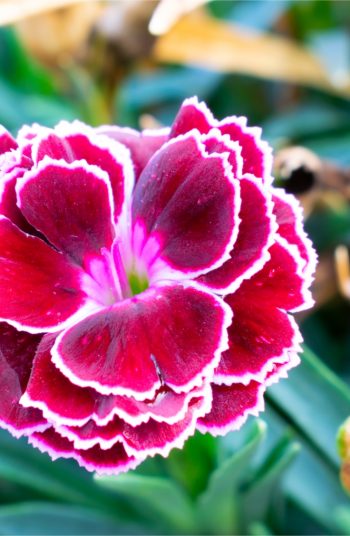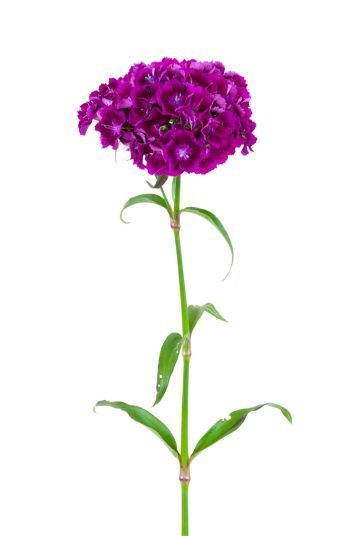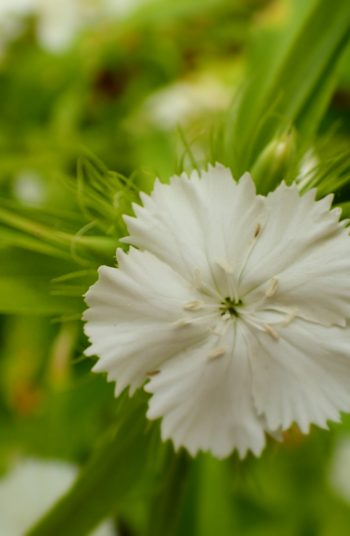

Sweet William, or Dianthus barbatus, is a perennial flower that is generally so short-lived it seems more like an annual or bi-annual. It typically blooms the second year it is planted. It boasts a multitude of colorful flowers on green stems with thin, sparse leaves. Though the foliage is not what you would call “full,” it is still attractive and fills whatever space it is given once the flowers have bloomed. Sweet William does well in zones 3 through 9.
Sunlight Needs: Sweet William does best when planted in a sunny spot with minimal shade, although they will tolerate light shade conditions. If given full sun exposure, this plant should flower through late spring and summer.
Watering Needs: Plant this flower in an area of moist, well-drained soil. Sweet William will bloom best if you provide a rich, fertilized soil from the first planting. After planting, apply a good general-purpose fertilizer monthly.

Foliage: The foliage of Dianthus barbatus is fairly compact, although the plants themselves grow to be anywhere from 7-18″ in height. Because of its compact size, you can grow this flower in borders, pots, or window boxes. They work well in any container!
Must-Know Plant Care Tips: Sweet William must be grown from seed. You can either seed them directly into your garden, or start the seeds indoors first. To obtain the earliest spring blooms, start the seeds indoors anywhere from 6-8 weeks before the last spring frost. Once the last frost has passed, you can safely transplant Sweet William outdoors to enjoy. Space them about 6″ apart, but no worries if they end up a little closer than that. This plant tolerates crowding well.
 Plant Problem-Solver: Unfortunately, Dianthus barbatus is subject to pest problems. This includes pests such as nematodes, slugs, squirrels and deer. Nematodes are the biggest threat, so treat early on with an insecticide made to stop nematodes. The good news is that once Sweet William is established in your garden, it will give you few problems.
Plant Problem-Solver: Unfortunately, Dianthus barbatus is subject to pest problems. This includes pests such as nematodes, slugs, squirrels and deer. Nematodes are the biggest threat, so treat early on with an insecticide made to stop nematodes. The good news is that once Sweet William is established in your garden, it will give you few problems.
Pretty Pairings: For a beautiful cottage garden the neighbors will admire, pair Sweet William with plants such as Black-eyed Susan, Hollyhocks and Daisies.

Leave a Reply